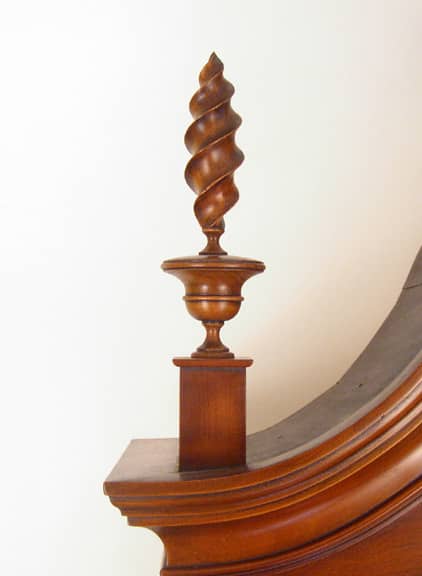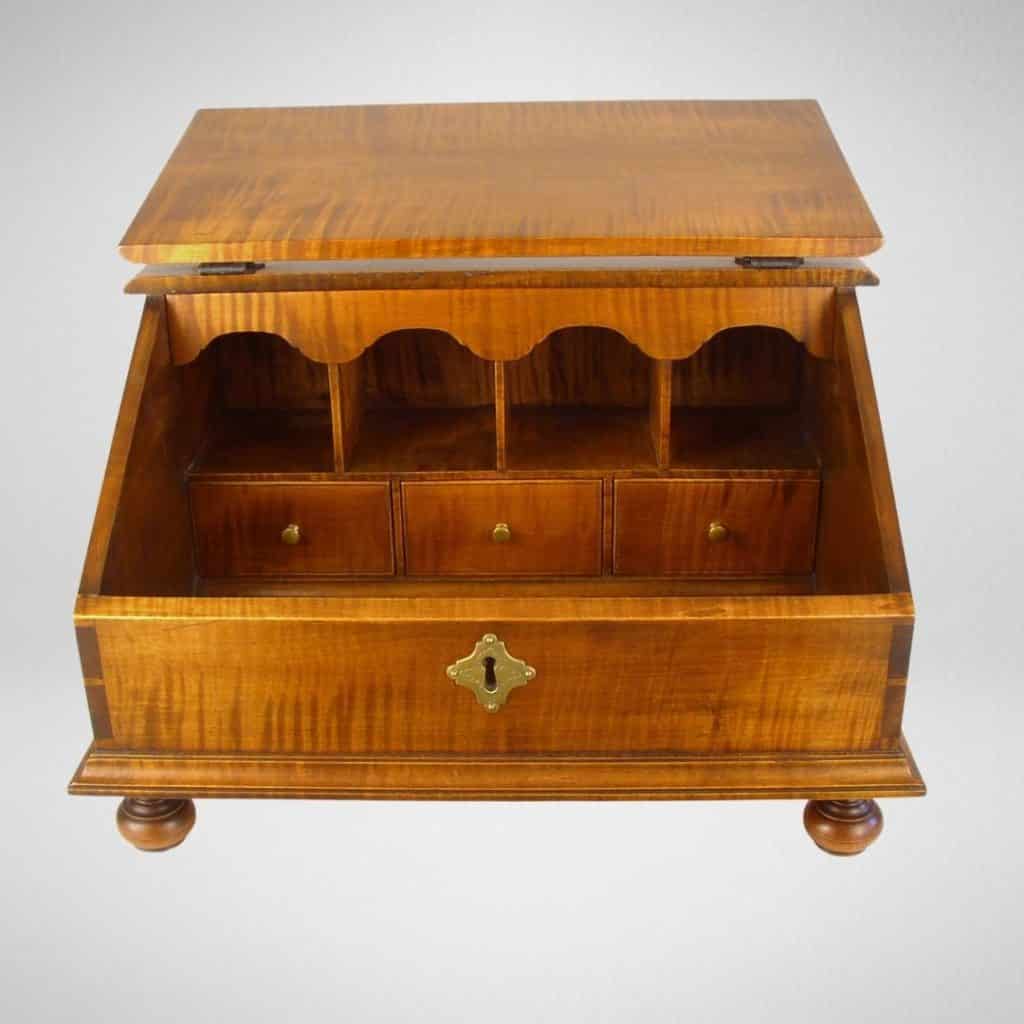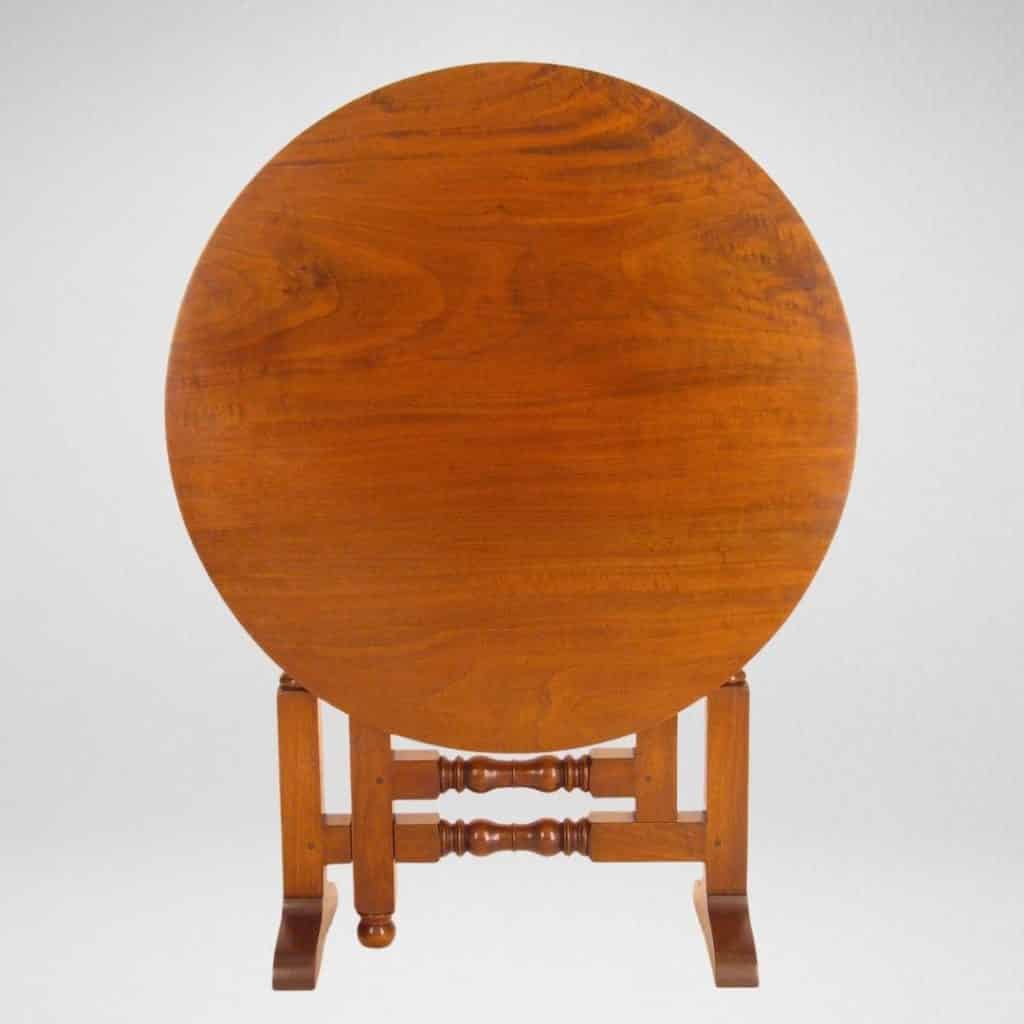Furniture Construction and
Antique Reproductions
The epochs of wood furniture construction

Furniture has evolved alongside human civilization, taking on new forms as technology advanced and using materials available at the time. Professional antique restoration experts and historians can date a piece of furniture by examining the “secondary woods,” the drawers and backs. In the 18th Century, furniture makers sourced secondary woods from more affordable places in the local region, including pines, while saving more expensive woods were used for the rest of the furniture. The 19th century gave way to the mass production of furniture, resulting in a gradual decline in the number of individual craftsmen and designers.
A revival of the artisan
In an age of automation, David J. Lunin’s wood furniture construction style is an act of rebellion. A factory line can not replicate the eye to fine detail, the quality craftsmanship and attentive design of an 18th-century master craftsman.
Lunin uses the same tools and methods that 18th-century furniture makers used because he wants to preserve the fine details you’d find in Colonial American antiques. He has worked with the most renowned antique restoration experts in the East Coast. Like an archaeologist at a dig site, Lunin has several years of experience carefully deconstructing valuable pieces of antique furniture, studying how each piece was made and preserving the furniture’s history in the process.
Lunin’s training, experience and specialized skill set of historic practices of woodturning have earned him the reputation for producing museum-quality 18th-century reproductions. His range of fine wood furniture includes a William and Maryhighboy from the 17th century, a 1720 Rhode Island tall-case clock and a large Shaker kitchen table.
Lunin strives to preserve early woodworking and craftsmanship through his work and by showcasing tools used at the time. He designed and constructed a Leonardo da Vinci-inspired wooden treadle lathe, a foot-powered wheel that rotates a piece of wood on an axis so that it can be manipulated into whatever shape is desired by the turner. Lunin has taken his lathe to museums to demonstrate woodturning.

The Timeless Collection:
Inspired by 18th-Century Furniture Design
Lunin’s antique restoration experience inspired him to create exact replicas of furniture you’d find in the 1700s. He is known for creating museum-quality tables, chairs, cabinets and even clocks — which inspired his Timeless Collection of historic furniture replications. Lunin painstakingly recreated all of the details of the William and Mary Highboy in the collection of the Metropolitan Museum of Art — from joinery to molding profiles.
Other examples of the Timeless Collection include:
- the Queen Anne Secretary Desk with arched raised panel doors, gooseneck crown moldings and twist carved finials;
- the Windsor Settee unique carved seat and V-shaped stretch arms;
- and a copy of a tall case of clock from 1720 with brass-engraved face and a sarcophagus top.
Frequently Asked Questions

Ready to get started with antique repoductions?
We need more information to better serve you. Expect a response within 24 hours.











